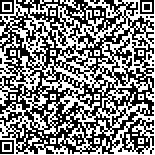下载中心
优秀审稿专家
优秀论文
相关链接
摘要

为建立监测区域以遥感和GIS为基础的森林郁闭度及蓄积定量估测方程,需在监测区域抽取一定数量有代表性的样地。如何有效抽取有代表性的样地属多目标优化问题。若根据监测区域已知样地的数量,采用所有可能的组合方法,按一定优化标准进行抽样,计算工作量将非常庞大,实际工作中很难进行。为此需先对监测区域的样地进行分类,在分类的基础上选择一定数量有代表性的样地。因度量样地之间亲疏程度的统计量及类和类之间相似性测度指标有多种,因此对同一监测区域,不同的统计量及类和类之间相似性测度指标,将得到不同的分类结果。设置不同的影响郁闭度及蓄积估测的遥感和GIS因子,分类结果也会出现较大的差异。本文针对特定监测区域,采用计算机仿真方法,系统研究了不同影响因子对分类的影响规律,实际工作中应如何选择度量样地间亲疏程度的统计量及类和类之间相似性测度指标,所得结果可用于指导生产实践。
In order to establish the forest canopy density and stock volume estimation equation based on remote sensing and GIS in the monitoring area,it's needed to sample certain amounts of representative sample plots.How to rationally select certain amounts of representative sample plots belongs to the problem of multi-objective optimization.It's hard to do in practical work because of the heavy calculation workload from the selecting by certain optimizing standards with all the combination method according to the known amounts of sample plots in monitoring area.Therefore,to classify the sample plots firstly and then select certain representative ones is needed.Because of the manifold of statistic measuring distance between sample plots and concrete clustering method,different categorized results appeared in the same monitoring area result in different statistic and clustering methods.Designing different factors of remote sensing and GIS that influencing the estimation of canopy density and stock volume, there will be a large difference in classifying results.To a specific monitoring area,the influencing law of different factors to classifying is studied systematically by means of computer simulation.Meanwhile how to choose the statistic measuring distance between sample plots and clustering methods in practical work is also studied in this paper.The results can be useful to real work.

